This is the first decent picture I captured on 27 May 2025.
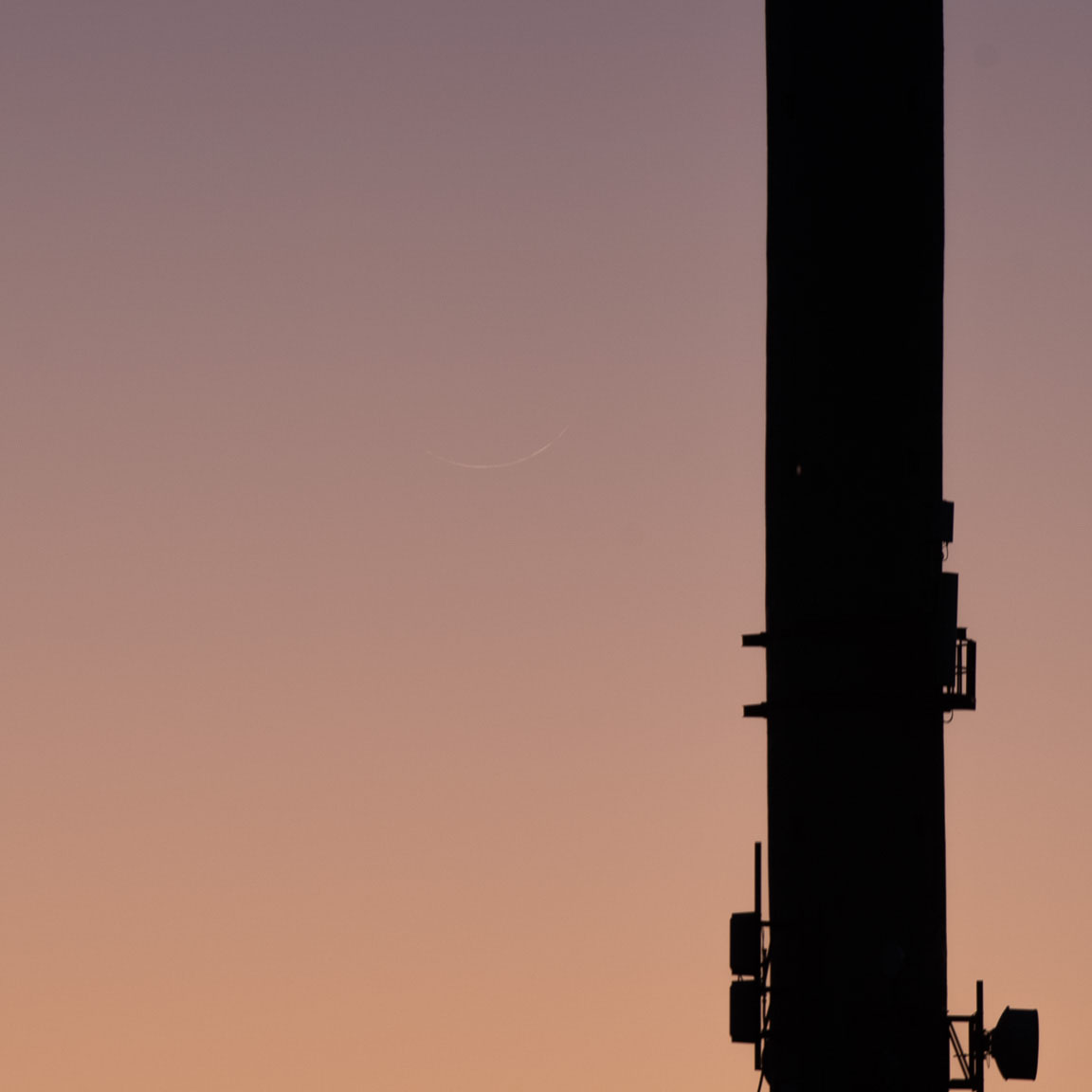
I must say, spotting this moon was easy—it wasn’t difficult at all. I’ve observed moons before where you really have to concentrate through the eyepiece to catch, but that wasn’t the case this time.
After easily spotting the moon through binoculars, I invited the first of four people to take a look. I gave him about 15 seconds, but he couldn’t see it. Since I knew the moon was clearly visible, I asked if the second person could try. Within just 3–4 seconds, he confirmed: “Yes, I can see it!”
Next, I asked the third person, but he also couldn’t see it. Then I called the fourth person, who was able to spot the moon within 5 to 8 seconds. I went back to the first person who initially couldn’t see it, and this time he managed to find it. Meanwhile, the fourth person struggled a bit the second time, but I reassured him: “It’s my job to show you the moon today—just be patient.”
After that, I began capturing the set of images you see here. As planned, just before sunset, I asked everyone to try spotting the moon with the naked eye while I continued taking photos.
This timelapse ends where it does in the video because later, a herd of cows caused enough disturbance to interrupt the shoot. Otherwise, I would have documented the moon from the moment I first saw it all the way until moonset.
هذا تسجيل الأخ محمد بعد رصد الهلال باللغة العربية
Br Muhammad and Br Babar were my companions on this moon-sighting journey. Here, they are seen recording their observations while speaking in Arabic.
When I landed in Portugal, I hadn’t slept for nearly 24 hours — between travelling, driving, and the pressure of finding clear skies and then escaping to Portugal. Just before Dhuhr, I managed to get an hour of rest on the mosque floor. We then prayed Dhuhr in congregation.
Imam Umar had arranged a car and asked Br Babar to accompany me. I preferred to travel with no more than one person for logistical flexibility. However, after the prayer, as we were having a discussion, some more Musalees came to meet Imam Umar. I was sitting next to them and greeted Br Muhammad in Moroccan Arabic. Within a minute of speaking to him, I sensed he would be a great companion for this task. So, I revealed the purpose of my trip and invited him to join us. I believe he had some work scheduled, but with the help of his friends, he managed to rearrange things. We then left the mosque in Br Babar’s car.
Both brothers did a phenomenal job — like true professionals.
We had an intense two-hour planning and training session, during which we carefully assigned roles and responsibilities. Without their support, much of the footage we captured — and many of the tasks we completed — would likely not have been possible. It’s simply not feasible for one person to manage multiple devices and conduct accurate observations within such a limited time frame. Their contribution was truly invaluable.
This footage captures the moment just before I pinpointed our exact observation location. As a team, we assigned roles and responsibilities for each stage of the process. This was also the special moment when two local brothers — who had never participated in moon sighting before — were fortunate enough to witness the new moon for the first time in their lives. How lucky they are they begin their moon chase of life, possibly the youngest moon they’ll ever see. They even recorded this moment themselves.
Later, when news of our positive moon sighting reached Morocco — which is geographically close to Portugal — I began receiving phone calls from people there. Br Muhammad, being Moroccan himself, kindly helped communicate with those callers in Arabic
𝐓𝐡𝐢𝐬 𝐭𝐢𝐦𝐞-𝐥𝐚𝐩𝐬𝐞 𝐜𝐚𝐩𝐭𝐮𝐫𝐞𝐬 𝐢𝐭 𝐠𝐫𝐚𝐜𝐞𝐟𝐮𝐥𝐥𝐲 𝐝𝐢𝐬𝐚𝐩𝐩𝐞𝐚𝐫𝐢𝐧𝐠 𝐛𝐞𝐥𝐨𝐰 𝐭𝐡𝐞 𝐜𝐮𝐫𝐯𝐞 𝐨𝐟 𝐄𝐚𝐫𝐭𝐡’𝐬 𝐡𝐨𝐫𝐢𝐳𝐨𝐧.
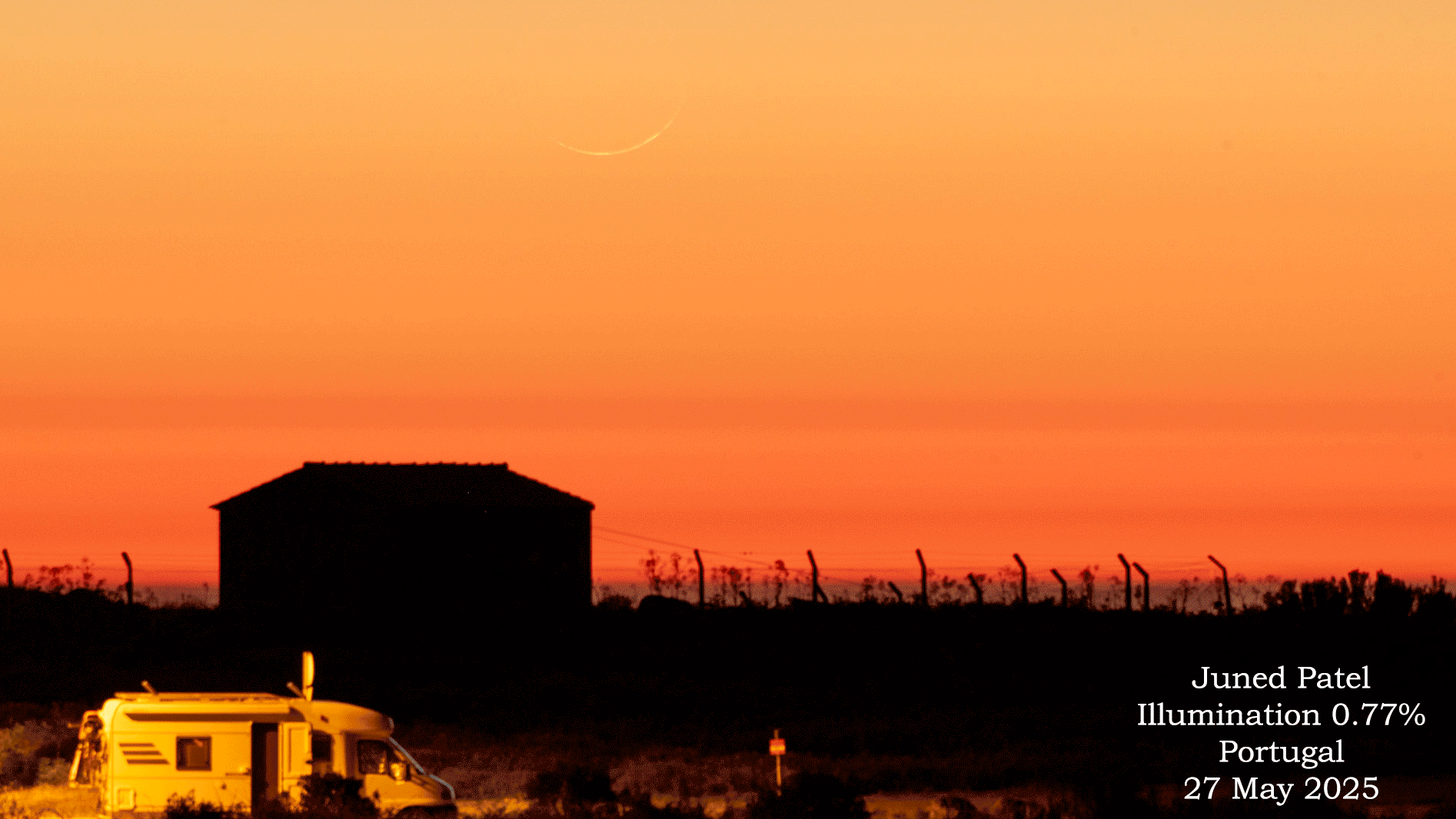
27th May 2025 — the thinnest crescent moon I’ve ever seen with the naked eye.
Based on my own independent prediction, I believed that—given clear sky conditions at the lower horizon—this moon would be visible to the unaided eye from anywhere between Morocco to the UK. By “clear sky,” I’m not referring to cloud cover, but rather the overall quality and clarity of the atmosphere – I described it in small line as “All depends on the quality of the sky till the lower horizon.”.
However, one thing I must admit I didn’t expect: that the moon would remain visible all the way until moonset. I had anticipated it would disappear into the lower horizon after just 5 to 12 minutes of visibility. Witnessing it sink completely below the horizon was something I hadn’t foreseen, and it was remarkable to record and witness it.
The last time I could see the moon with my naked eyes, it was just above the horizon. I wasn’t able to follow it all the way down visually as shown in the final frame of this time-lapse—but the camera did capture it.

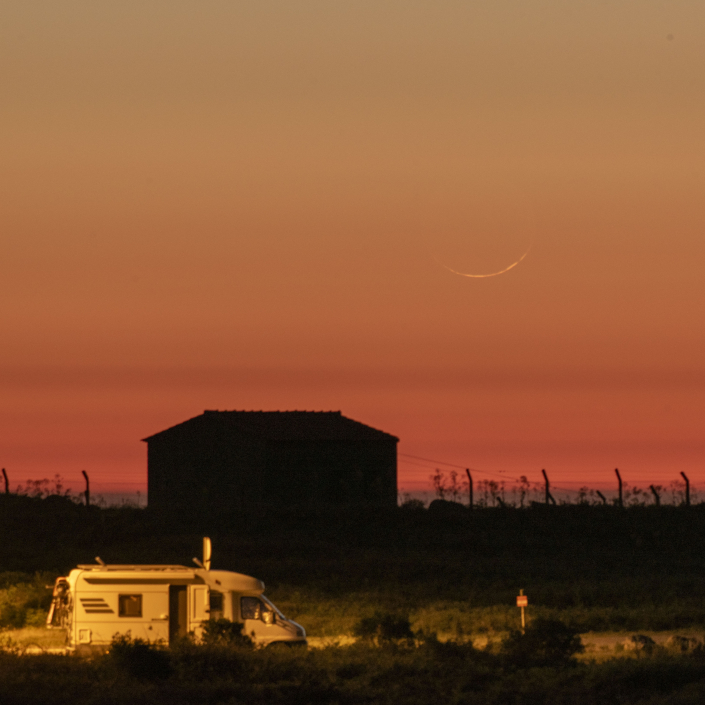
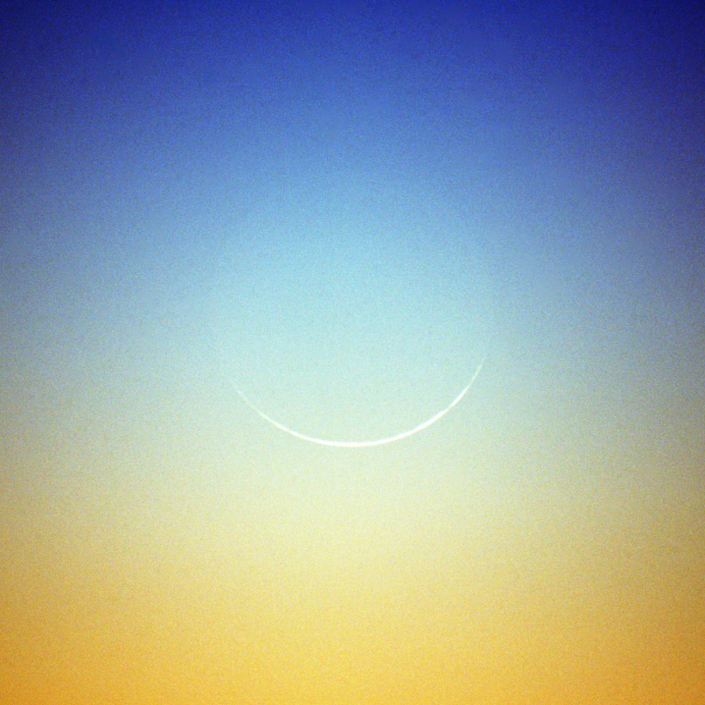


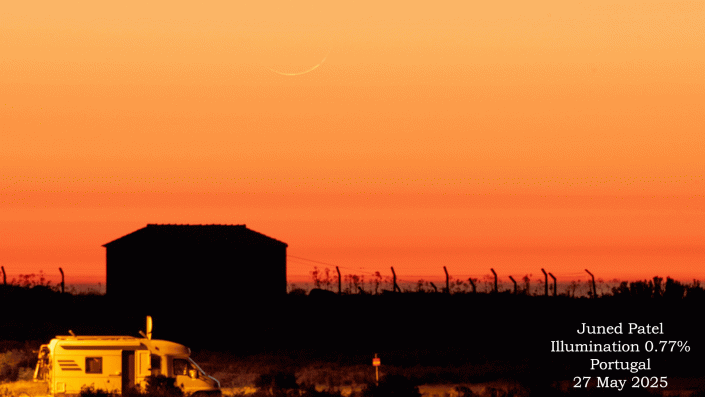

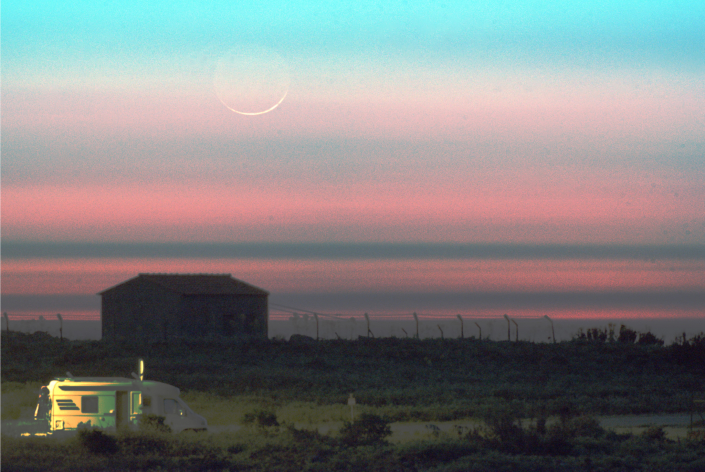


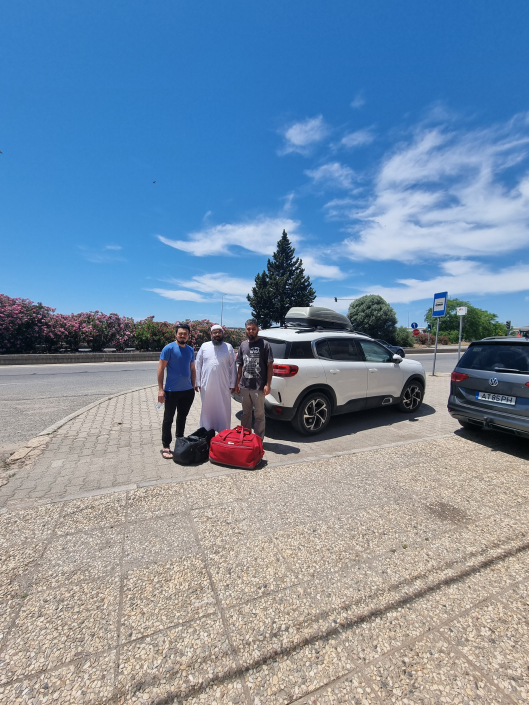

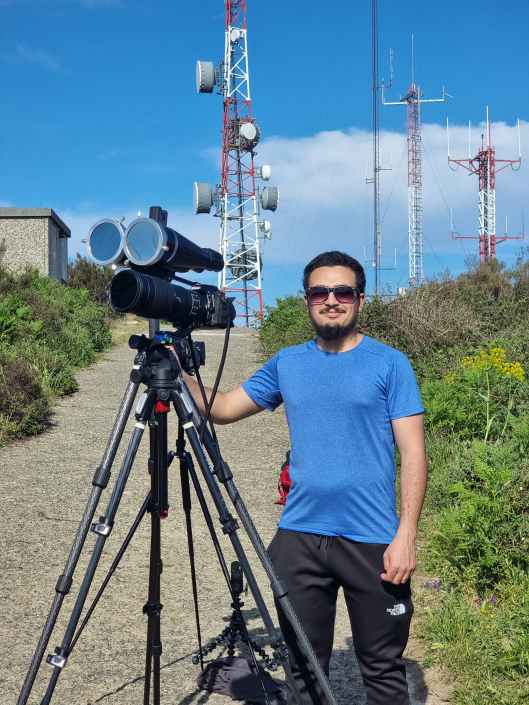
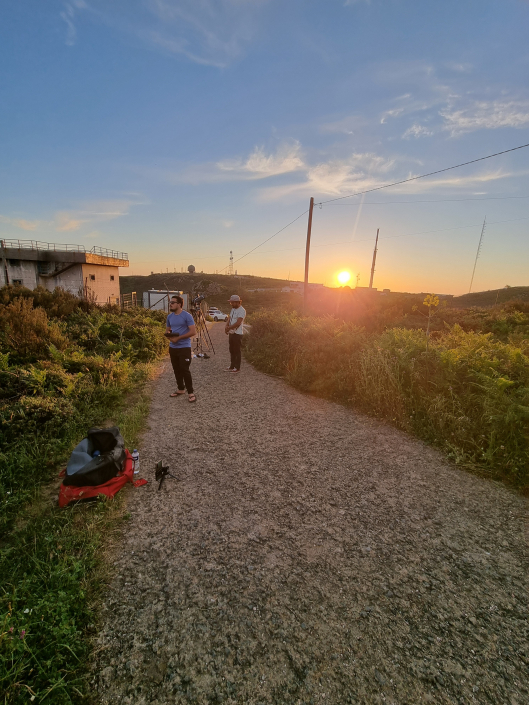
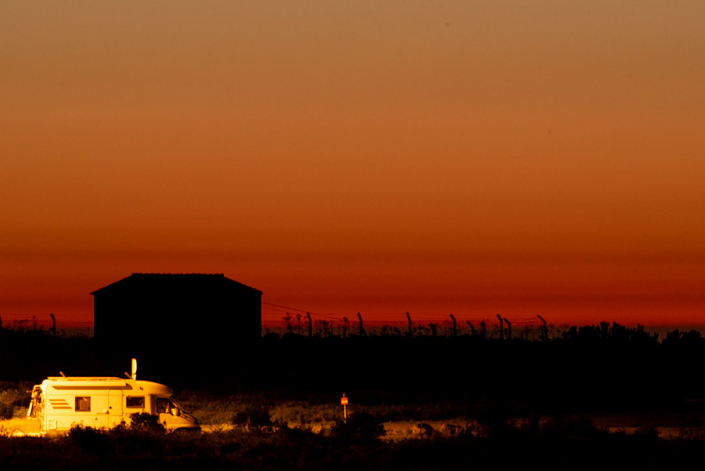
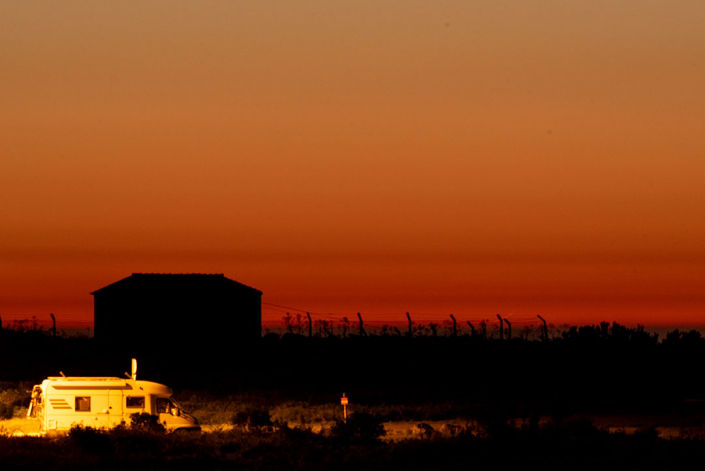
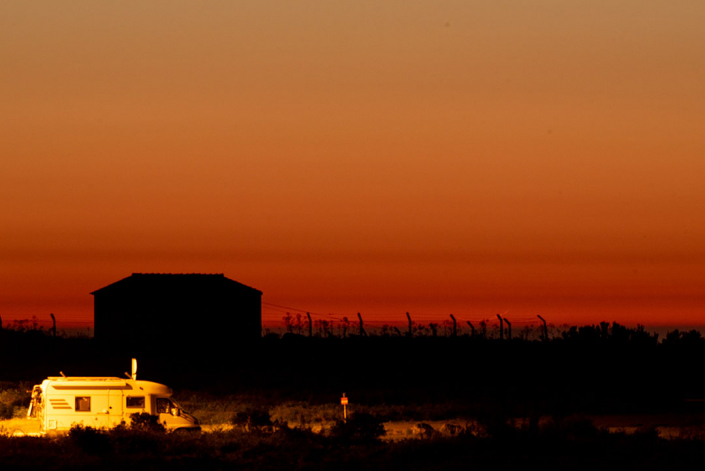
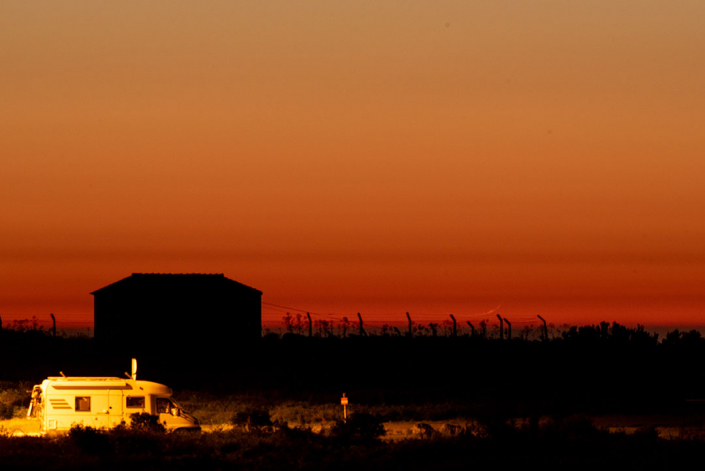

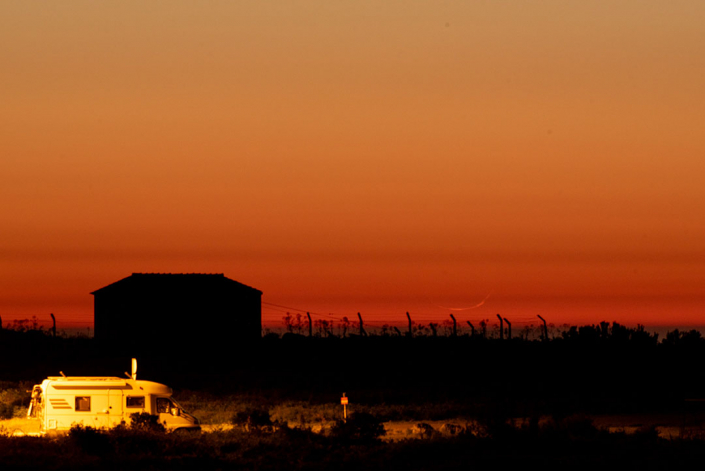
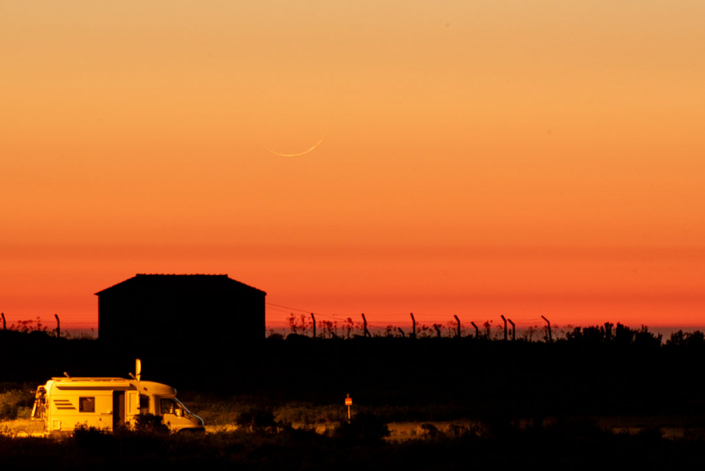



Leave a Reply
Want to join the discussion?Feel free to contribute!